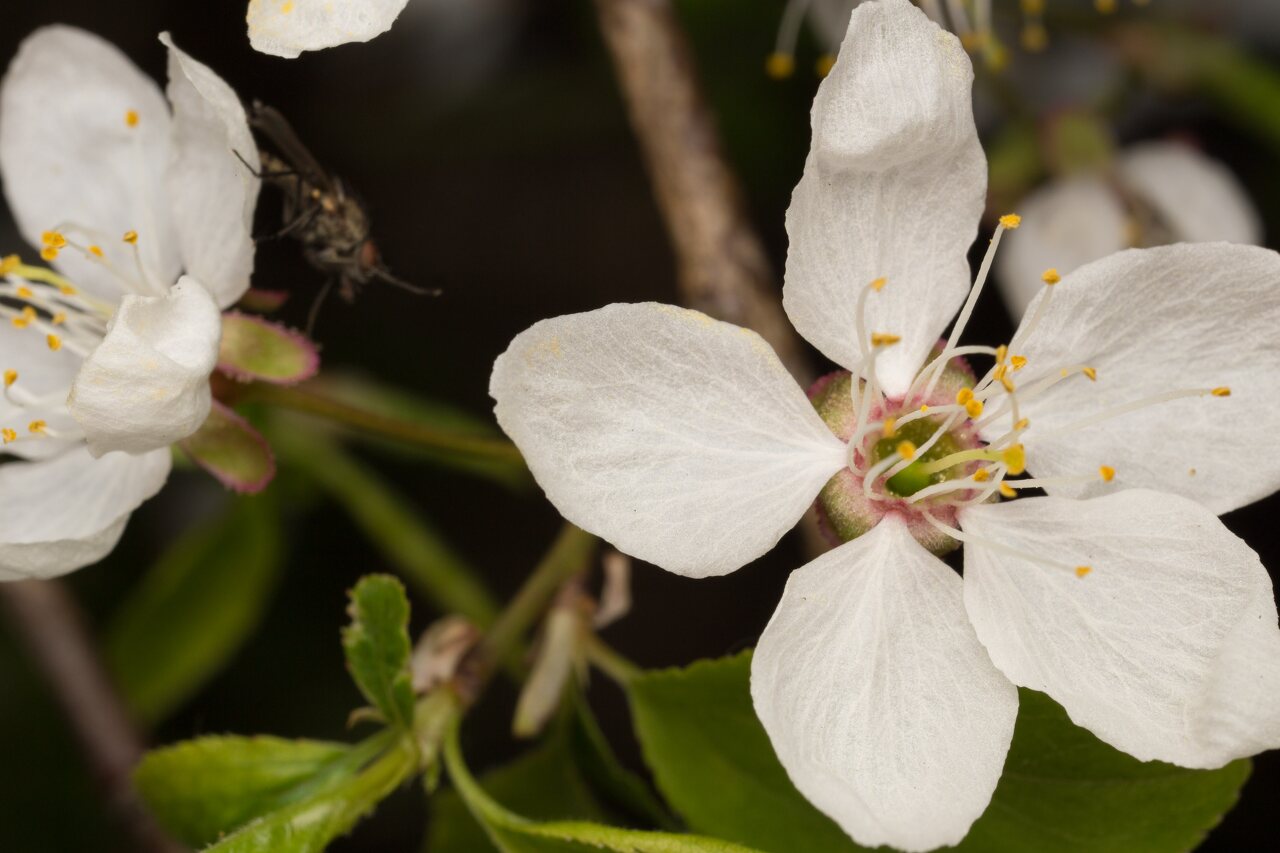
Prunus cerasifera flowers · skėstašakė slyva, žiedai
- cherry plum, myrobalan plum
- Kirschpflaume, Myrobalane
- skėstašakė slyva, kaukazinė slyva
- kaukāza plūme, aliča
- śliwa wiśniowa, ałycza
https://en.wikipedia.org/wiki/Prunus_cerasifera It is native to Southeast Europe and Western Asia, and is naturalised in the British Isles and scattered locations in North America. Also naturalized in parts of SE Australia where it is considered to be a mildly invasive weed of bushland near urban centers.
Cultivated cherry plums can have fruits, foliage, and flowers in any of several colours. Some varieties have sweet fruits that can be eaten fresh, while others are sour and better for making jam. Cherry plums are a key ingredient in Georgian cuisine where they are used to produce tkemali sauce, as well as a number of popular dishes, such as kharcho soup and chakapuli stew. It is a popular tree in Romania where its fruits are used for souring soups when immature, for eating raw when ripened, and for making moonshine when overripe because of their high sugar content.
Taurėlapiai nulinkę žemyn. 8702
0 comments
Add a comment